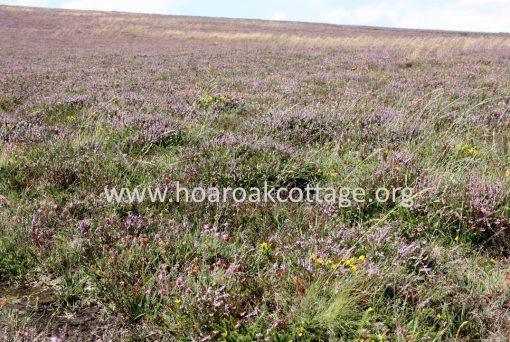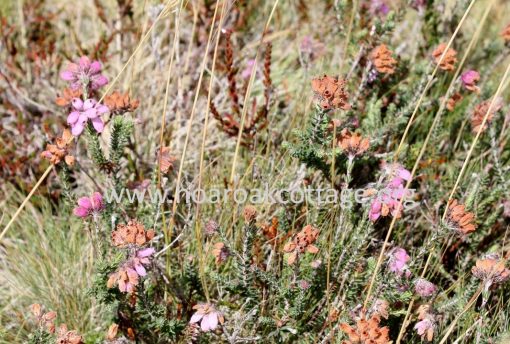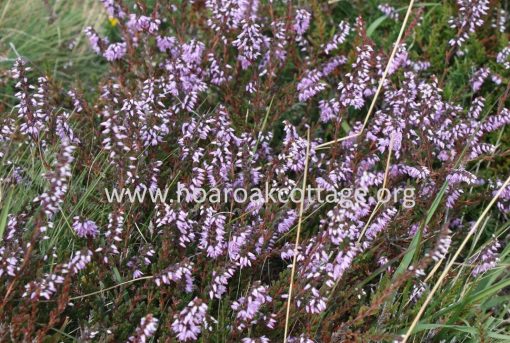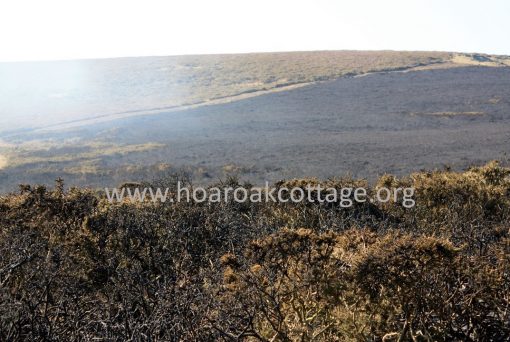The vast tracts of open heather moorland are one of Exmoor’s glories. At the height of its flowering in August, the moors seem washed with purple although on closer inspection the flowers vary in colour from darker shades through to pale lavenders and pinks. The colour variation is partly due to the age of the flower but also to the species. On Exmoor, all three species can be found: Bell Heather Erica cinerea, Common Heather (also known as Ling) Calluna vulgaris and Cross-leaved Heath Erica tetralix.

For the Scottish shepherds of Hoar Oak Cottage, the view from the parlour window would have not been dissimilar to their home in the Southern Uplands. Was the sight of the heather hillside in full flower a comforting memory of a distant land or a trigger for home-sickness? Perhaps they brought with them their traditional uses for the plants – making brooms, stuffing mattresses or as a herbal remedy for coughs and as a general tonic. In the Highlands, heather was also used as roof insulation material but as the cottage was provided by their employer it is highly unlikely that this would have been carried out at Hoar Oak; no evidence of this was uncovered during the recent stabilising of the ruins.



To find out more of heather, or indeed many of the everyday aspects of the past life of Exmoor, it is often necessary to read through old books to glean information. One of our favourite sources is Red Deer, written by Richard Jefferies in 1884. About heather he mentions several things that we may have not appreciated such as how, when the weather is hot and dry, “the brittle, woody stems of the heather wear out the stoutest boots quickly.” He also describes the burning (“swaling”) of the heather each spring.

Swaling, which appears to be a West Country dialect word, is now tightly controlled by legislation but the principal of deliberate burning the moorland vegetation to promote regeneration dates back centuries. Recent research has found burnt deposits buried deep in the peat layers dating from the medieval period (source: ENPA). Swaling, like many other farming practices is carried out on a rotational basis over a number of years. In this way, there are heather plants ranging in age from the tasty, young growth of the newly burned providing food for the deer, ponies and sheep, and older growth giving cover and shelter to birds and other wildlife. For more information on swaling and the results of recent research visit this link.

Heather on Exmoor, part of a series of blog posts exploring the flora and fauna that surrounds Hoar Oak Cottage.
